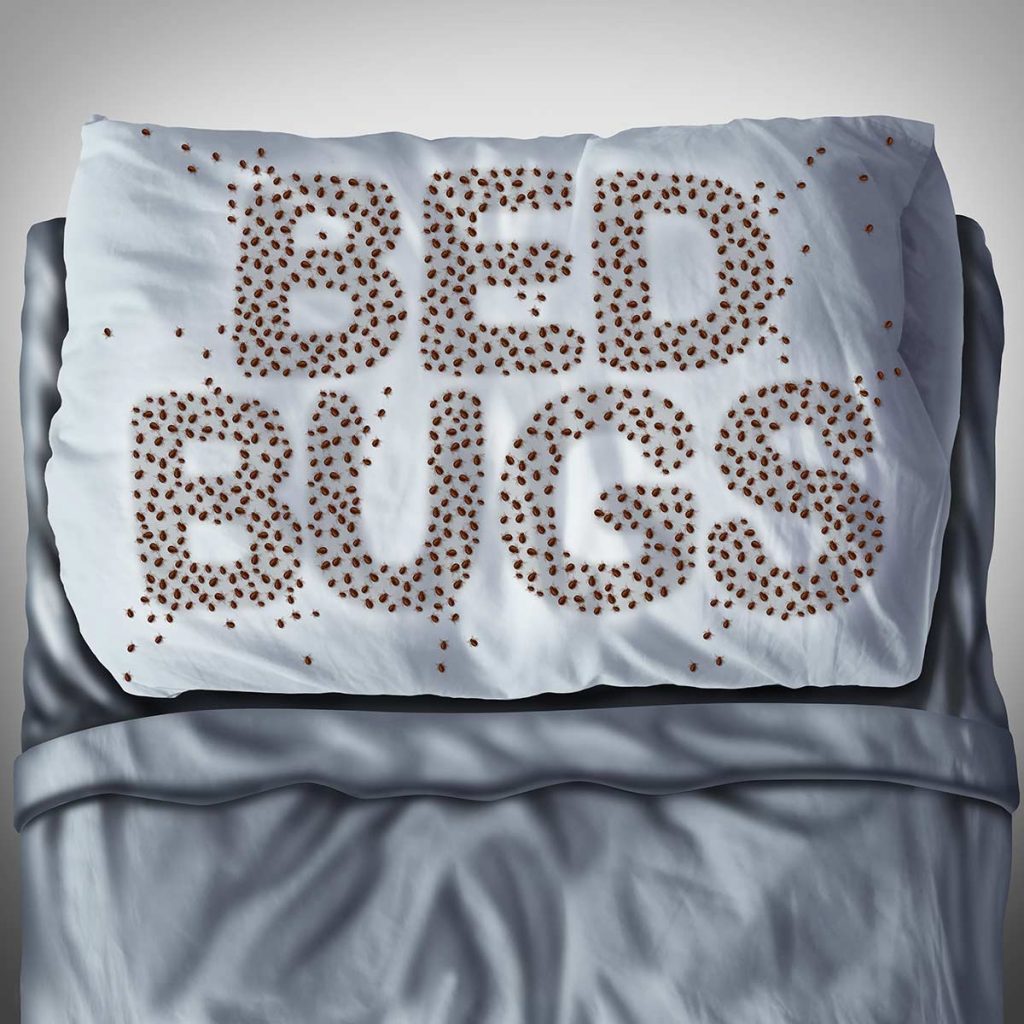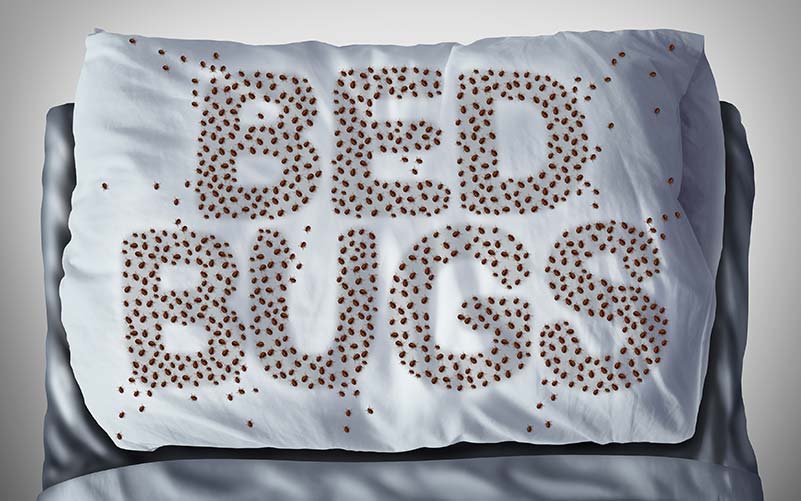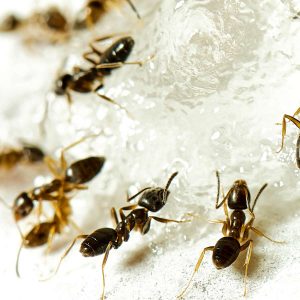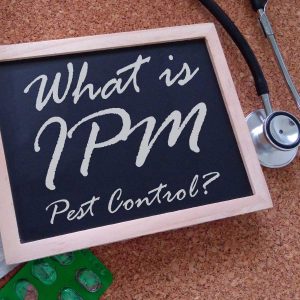There are pest infestations, and there are bed bug infestations. If you’ve ever battled these insidious beasts, you know it’s a life-changing commitment that goes on for months. If you catch them early enough, you may stand a chance of controlling their spread, and possibly even winning the war, but the problem is that bed bugs are usually all but invisible until the infestation is already well established. The short answer is that you can self-treat for bed bugs, but your chances of success are pretty low.
Bed bug hatchlings are tiny enough to penetrate the weave of a mattress, so they’re nearly invisible to the naked eye. Even the adults are excellent at concealing their presence, and most people don’t realize they have a problem until they start noticing they’ve been bitten. At this point, the pest is probably well established in your home, hiding its main population in deep cracks and recesses that are almost impossible to reach with over-the-counter pest remedies.
If you already have bites, or you’re seeing other signs of bed bugs, it will take a lot of work to get rid of them, and you’ll probably need professional help.
What are the Signs of Bed Bugs?
Mature bed bugs are less than a quarter inch long, about the size of an apple seed, and they can flatten their bodies to hide in remarkably thin spaces. They’re red-brown in color, except right after a feeding, when they’re bright red with blood. Look for signs of them in:
- Mattress seams
- Creases in clothing or personal belongings
- Headboards and bed frames, especially in joints and hidden corners
- Night stands and other furniture
- Corners where walls, ceilings, and door frames meet
- Wall paneling and wallpaper
Although much harder to spot, you may also see eggs, which are white and about a millimeter long.
Feces spots on mattresses and bedding are usually easy to find, if you pull back folds and seams. These small, dark spots are usually an indication of a well established infestation. You many also smell a mild, rotten fruit odor from bedding.

How to Get Rid of Bed Bugs
Whether you plan to call a pest control professional or self-treat for bedbugs, you have a lot of work ahead of you. Think of bed bugs as a disease that can spread by physical contact from one part of your home to another. You’ll have to “quarantine” each area you clean, to keep the pests from coming back, and to prevent their spread into other areas.
Bedrooms are the obvious place to start; bed bugs are looking for blood, and if they can’t get to you while you sleep, they can’t eat. Here’s the battle plan:
- Remove all bedding and transport it to a washing machine in a sealed plastic bag. The washer’s hottest setting should be enough to kill any living bugs. (They can survive temperatures up to 122°F, and as cold as 33°F.) Dispose of the plastic bag in a secure dumpster away from buildings.
- Dry the bedding at your dryer’s hottest setting for at least 30 minutes. This will assure an effective kill. If your bedding fabrics can’t be washed and dried at these temperatures, dispose of them in a sealed bag and secure dumpster.
- Place interceptors (they look like furniture sliders with gooey adhesive across the top) under each leg of the bed. This will keep new bed bugs from climbing to their food source. It also gives you a visual indication of how many bugs are still in the area.
- Remove all clothing and clutter from the floor, and pull furniture at least six inches away from walls. Wash any clothing as directed above, and remove any other suspect articles to an outdoor location away from the house for later inspection and treatment.
- Vacuum everything, especially around the bed and furniture. Give special attention to cracks, joints, and hidden crevices in furniture and walls. Again, these monsters can slip into very small spaces; don’t underestimate them. If you have a steam cleaner, use it to force heat into these small spaces.
- Wrap the mattress in a bed bug encasement. Available at any department store, this heavy duty, sealable, plastic bag will contain any pests still living in the mattress.
- Look for bed bug signs in curtains and other furniture around the house. Vacuum as needed. If you have a steam cleaner, use it on curtains and upholstery.
- Dispose of vacuum bags in an outside trash receptacle.
- Repeat all the cleaning procedures on this list every time you see new signs of bed bugs. It may be a long haul.
The strategy here is to keep getting rid of the bugs you find, and to isolate the rest from their food supply; namely, you. Starve bed bugs, and they’ll eventually die off, but the bad news is that they can live for six months or more without a meal, so unless you can kill the hidden adults, eggs, and hatchlings, you’re probably in for another fight in the coming weeks or months. If you’re extremely diligent with your cleaning procedures, it’s safe to assume your home is bed bug free after a year of monitoring.

Do Over-The-Counter Bed Bug Pesticides Work?
EPA-approved bed bug pesticides and other treatments are available at any hardware store, but it’s difficult to apply these chemicals in all the deep places bed bugs hide. The EPA warnings for these treatments are stern and comprehensive because people who misuse pest treatments often find themselves with much bigger problems than bugs.
If you buy chemical treatments, use them only as directed. And don’t pull out a spray can every time you see a bed bug; cumulative concentrations of insecticides in your living areas can make you very, very sick. Don’t use any pesticides labeled for outdoor use, and don’t spray pesticides on mattresses, pillows, furniture, or anything people will touch.
One way to self-treat for bed bugs is to sprinkle pesticide-grade diatomaceous earth on the floor in areas of visible bed bug traffic. This powder is made of fossilized microbes that have very sharp surfaces. When the bugs walk over the powder, it destroys the oily, protective layer that covers their exoskeletons, and they die of dehydration in a matter of hours. WARNING: Don’t use diatomaceous earth that is not a registered pesticide product. Other types use different types of microbe skeletons that can be hazardous to breathe.
Don’t get creative with bed bug treatments. Yes, a space heater next to the wall could “bake” the bugs that are hiding there, but it can also burn the house down. A few of these fires are reported every year. The same goes for treating with rubbing alcohol; it’s extremely volatile, and a stray spark can set your home ablaze.
Foggers can be effective at reducing infestations, but they usually don’t penetrate the cracks and crevices where bed bugs hide, so don’t get your hopes up. If you decide to try this, employ extreme caution, follow all instructions to the letter, and use common sense. The Centers for Disease Control and Prevention reported over 3,000 cases of fogger related illnesses over an eight year period. Four people died, and twenty other cases were life threatening. This is bad stuff, and it may not even work.
Self-Treat for Bed Bugs Vs. Professional Bed Bug Extermination
If you have an infestation, you can self-treat for bed bugs but the outlook is not great. Fortunately, pest control technicians have a much more effective arsenal at their disposal. They use specialized tools to apply chemicals into the deep recesses where bed bugs hide. They also have other treatments and application methods that you can’t buy at the hardware store. If you seek professional help for bed bug treatment, just be sure the pest control company guarantees their work. This is one pest you probably won’t defeat on your own, but they can.
Thanks for reading Go Green Pest Control’s blog, “Can You Self Treat for Bed Bugs?”. If you live in Wichita, Manhattan, or Junction City, Go Green can help. Give us a call at (316) 733-0687 in Wichita or (785) 377-0687 in Manhattan and Junction City. Let’s put this bed bug problem behind you!






